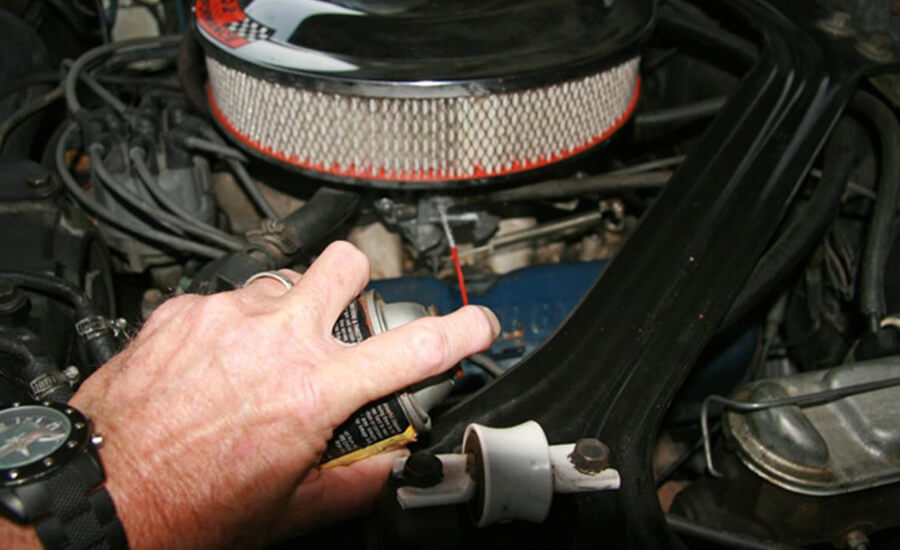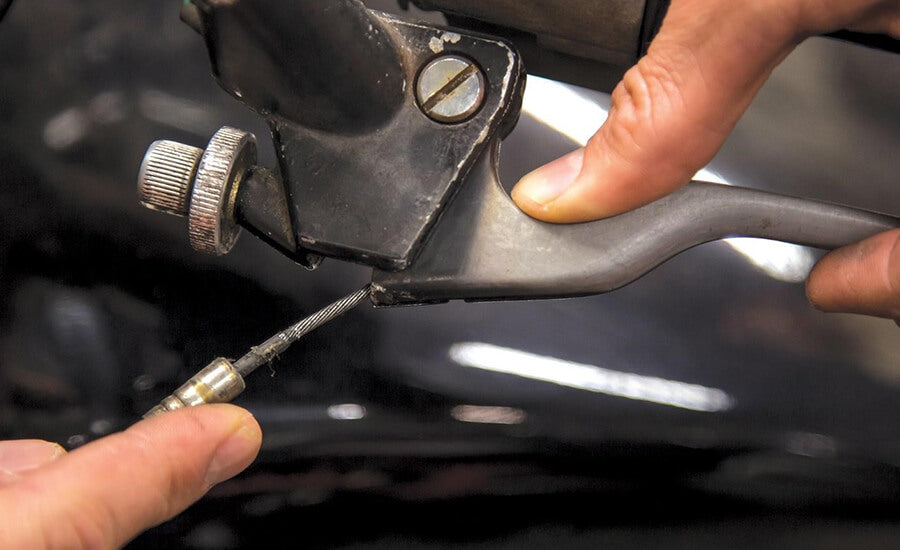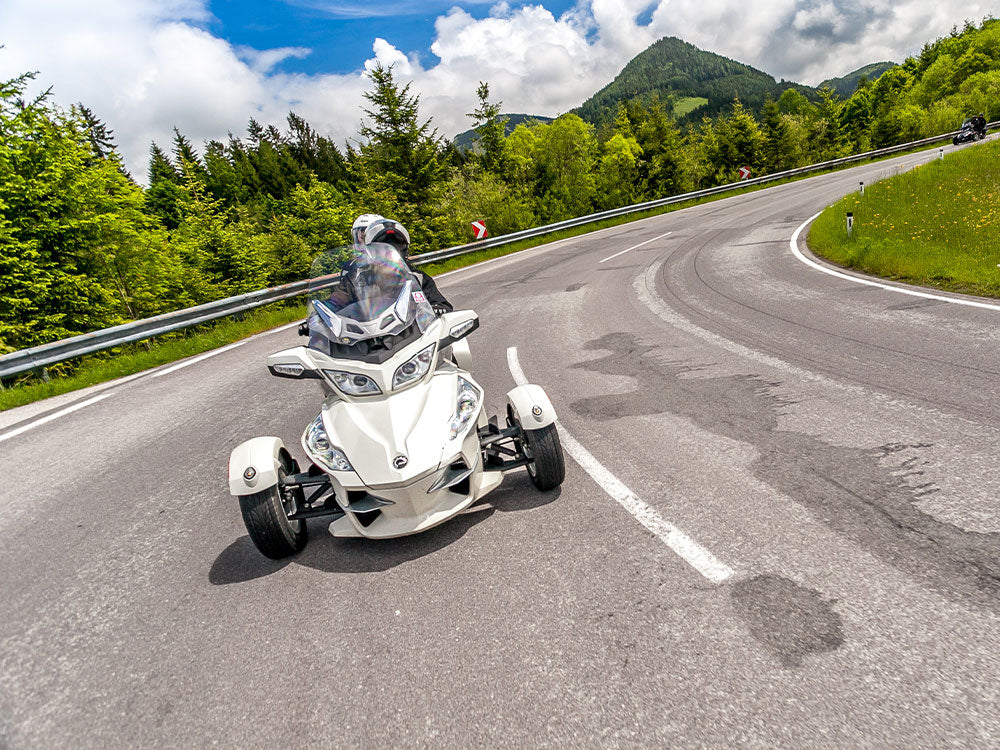Table of Content
Even the most reliable Honda, Yamaha, or Harley Davidson motorcycles start to experience mechanical problems as they get older. Some motorcyclists believe that a motorcycle becomes a classic as it gets older. However, an older motorcycle is more prone to suffering mechanical issues than a newer bike.
Used or older motorcycles are still popular, with plenty of people buying them due to being cheaper than modern motorbikes. However, if you are buying an older motorcycle, you will need the basic tools and knowledge of how to identify mechanical problems and how to fix them. You can keep older motorcycles functional and improve their performance by properly maintaining and regularly checking for issues. This article discusses common issues with older motorcycles and how to fix them.
1. Oil Leaks

Oil leaks are the most common issues with older and newer motorcycles. If you find an oil leakage problem, this could be an indication of other problems. If your motorcycle engine has a constant oil leak, it might reduce lubrication and cause more friction between the metallic parts. Luckily, oil leaks are easy to spot.
Also Read: 10 SIGNS YOUR MOTORCYCLE NEEDS AN OIL CHANGE
1.1 Reasons for Oil Leaks
- Engine oil leaks occur due to old or faulty gaskets on the cylinder heads, oil pan, crankcase, and valve cover. Gaskets are mechanical seals fitted between two touching surfaces to prevent leakage. However, they will start to break down due to having to bear high internal pressure. Oil starts to leak from the gaskets when they become brittle and porous, causing cracks to form over time, that eventually cause them to fail.
- A faulty or old oil drain plug or improper fitment can also cause engine oil leaks. Oil drain plugs can also become loose due to the motorcycle vibrating while riding.
1.2 How to Fix Oil Leaks
Motorcycle oil leaks do not require professional tools and skills. However, you should apply for repairs as soon as possible since it could result in engine failure if left alone. Regularly checking for oil leaks ensures you can spot and deal with them early before they become an issue. Also, make sure to check if the oil drain plugs are tightened before and after every ride to avoid oil leaks.
Oil drain plugs are easy to replace while fixing gaskets requires disassembling the whole engine. After the engine is disassembled, make sure to clean every part with an oil stain and replace the gasket with a new one.
Changing the cylinder head gaskets is a difficult task as it exposes the engine’s vital parts; even a minor mistake can cause the engine to become damaged. It is best to take your motorcycle to a professional mechanic if you need to replace the cylinder head gaskets.
2. Electrical Systems

Older motorcycles usually don’t have complicated electrical systems like modern motorcycles. However, they are fitted with high-output headlamps and taillights that quickly drain the battery. In older motorcycles, their electrical systems, components, and wiring are usually placed in a harness, resulting in a mess that makes it difficult to identify the source of the problem.
2.1 How to Fix the Electrical System
Fixing an electrical system issue is easy if you are familiar with the wiring and functions of the components. If you are unfamiliar with the electrical system, consult a mechanic.
The electrical system, wiring, and components do not last as long as a mechanical system, as they will start suffering mechanical issues sooner. Wires and connectors in the electrical system can become rusted, melted, and disconnected. You can look for issues with the electrical system, wiring, and components and replace or tighten any broken or loose connections.
Another common problem with older motorcycles is loose battery terminals. This should be checked first while troubleshooting. You can also use the multimeter to check the battery’s voltage.
You should also check the motorbike’s main fuse. A faulty main fuse can cause various issues, including poor performance, lack of acceleration, and the engine dying at random times.
3. Carburetor Issues

The carburetor is responsible for mixing fuel and air that runs through the engine to ensure smooth performance. Most modern motorbikes have replaced the carburetor with a fuel injection system that is efficient and emits fewer pollutants into the atmosphere.
Carburetors are as essential as the engine and require good maintenance. However, they also develop several problems over time like all mechanical systems.
Carburetors are designed to create a perfect balance/mixture of fuel and air. But problems can occur if the mixture becomes too rich or too lean. A rich mixture is when there is more fuel and less air. Meanwhile, a lean mixture is when the mixture has more air than fuel. The carburetor is considered to be faulty if it suffers from either.
You can identify the carburetor is suffering from a rich mixture if you see black smoke coming out of the exhaust pipes and the engine starts to misfire. Meanwhile, a lean mixture causes the engine to stall when it is cold.
3.1 How to Confirm the Motorcycle has a Faulty Carburetor
If you are having difficulty starting your motorcycle when the engine is cold and you have to lift the choke for cold starts, it is likely due to a faulty carburetor. Fuel leaking from the air filter may indicate a problem with your carburetor.
3.2 How to Fix Carburetor Issues
If you haven’t used your older motorcycle for a long time, the fuel pipes can become clogged and result in an improper mixture of fuel and air. Carburetor issues require a full cleaning or even rebuilding of the whole system. You will have to consult a mechanic to disassemble, clean, and/or replace the carburetor.
4. Rusting Inside the Fuel Tank

Rust inside the fuel tank can cause lower fuel quality, a faulty fuel delivery system, and poorer performance.
4.1 Reasons Why Rusting Occurs Inside the Fuel Tank
Rusting inside the motorcycle fuel tank usually occurs when it is empty and stored in a garage for a long period. Rusting occurs in areas where the humidity level is high.
4.2 How to Get Rid of Rust Inside the Fuel Tank
First, remove the motorcycle fuel tank and drain all the petrol inside. The number of rusted flakes can help you determine how serious the rusting inside the fuel tank is. Once you completely drain the fuel tank, pour in around half a liter of distilled water and an equal amount of pure sand, then shake the fuel tank. This method of removing rust is known as wet sanding. Rinse and shake properly until all the rust flakes have been removed from the inner surface. You can inspect the interior of the fuel tank using a flashlight to see if there is any rust remaining. It is also recommended you replace the filter.
There are also fuel tank rust-removing products available in the market that are more effective but require working with chemicals. While using these products, wear gloves and handle them carefully.
Also Read: HOW TO CLEAN A MOTORCYCLE GAS TANK
5. Motorcycle Brake Issues
An effective and reliable braking system is vital for a safe riding experience. If you find any issues with the motorcycle’s brakes, try to resolve the issue as soon as possible.
5.1 Motorcycle Brake Issues and How to Fix Them
| Motorcycle Brake Issues and How to Fix Them | ||
|---|---|---|
| Motorcycle Brake Issues | Why They Occur | How to Fix |
| Air | When air enters the braking system, it reduces efficiency. | If there is an oil leak or a hole in the braking system, it means there is also space for air to enter the system. Check for any openings and leaks and fix them to keep air from entering the system. |
| Insufficient Brake Fluid | Insufficient brake fluid can cause the motorcycle’s braking system to break down. | It is recommended you regularly check the braking system, brake fluid, calipers, and reservoir for any leaks or defects. |
| Overheating | Motorcycle brakes overheat due to friction. Overheating can be caused by old brake discs, incorrectly-fitted brake pads, and overused braking mechanisms. | Binding and overheating are usually caused by faulty springs, the motorcycle being unused for a long time, and the brake pads being corroded. This can be fixed by replacing the faulty springs and riding your motorcycle more frequently. |
| Binding | Binding can occur when the brakes’ components become stuck and cause the braking system to fail. Sometimes, the brake pads seize up and press against the wheels, causing motorcycles to become immobile. | |
6. Old Tire Issues

Tires play a key role in overall motorcycle performance. They are directly in contact with the road, provide traction, and help with acceleration.
If you buy an older motorcycle, it is likely that it has weak tires. Over time, cracks start to appear on the surfaces. High-quality tires ensure better performance, comfort, and safety.
The latest motorcycles come with high-quality tires that ensure better performance, stability, and traction in different road conditions.
6.1 How to Fix Old Tires
You cannot save old tires with cracks. You can predict how long a pair of old tires will last, but you cannot guarantee when it will be considered unusable. The best way to fix old tires is to replace them with a new pair.
7. Fork Oil Leaks

Fork oil leaks are a common issue with older motorcycles. It is best to immediately fix any leaks or take your motorcycle to a mechanic. Forked oil leaks can enter the motorcycle’s front suspension, causing reduced performance and damping.
7.1 How to Fix Fork Oil Leaks
You can fix fork oil leaks by replacing the fork oil, fork oil seal, and bushings. Because the fork assembly is a complicated component, it is better to consult a professional mechanic to deal with fork oil leak problems.
While changing the front fork oil, only put the recommended amount mentioned in the owner’s manual or consult a mechanic. When you are done changing the fork oil, make sure to put pressure on the fork, press down, and release until you see air bubbles.
7.2 When to Change the Fork Oil
If your motorcycle is making whining noises and the front end feels stiff while riding, these are indications of insufficient fork oil. For better performance, you should change the motorcycle’s fork oil at least once a year.
8. Vacuum Leaks

A vacuum leak is linked to faulty carburetor performance as it causes the improper mixing of air and fuel by letting more air into the system.
8.1 Why Do Vacuum Leaks Occur
Vacuum leaks occur when air gets into the carburetor due to a damaged rubber seal that has become dried out over time. Vacuum leaks can also occur due to degraded throttle shaft seals.
8.2 Results of Vacuum Leaks
If your motorcycle is suffering from a vacuum leak, the engine will perform less effectively. Vacuum leaks can also cause loss of power, slower acceleration, and irregular idling.
8.3 How to Fix Vacuum Leaks
To fix a vacuum leak, you need to replace the carburetor holders, rubber seals, and throttle shaft seals. You should also consult with your mechanic if you are unable to identify the issue.
9. Clutch Issues

Most older motorcycles have a manual gearbox and a cable-operated clutch. Over time, the clutch cable becomes brittle and the clutch lever can become too tight or too loose to pull, making clutch operation and gear shifting difficult. A low-quality clutch cable on an older motorcycle can also break due to extended use.
9.1 How to Fix Clutch Issues
Get the clutch cable replaced if it becomes too weak and brittle. Also, adjusting the cable screw can fix the clutch lever if it feels too tight or loose.
10. Conclusion
Older motorcycles have traditional designs, a shiny chrome finish, bulky parts, and comfortable ergonomics. However, they are more likely to suffer mechanical issues than newer motorbikes. The most common problems with older motorcycles are oil leaks, old tires, rusting, engine stalls, and loss of power. If you are a regular motorcycle rider, you should know how to fix these issues. However, if you have trouble identifying the issue with your motorcycle, you should consult a professional mechanic.
It is also best to regularly inspect your motorcycle for oil leaks and other essential parts that are becoming brittle over time so that you can replace them. The issues are avoidable to some extent if you properly maintain your motorcycle.
You can also improve your older motorcycle’s look by adding a few aftermarket parts that will improve its aesthetics and comfort. There are a variety of aftermarket parts available at Viking Bags, including sissy bars, crash bars, fairings, and handlebars. There are also different luggage options available to improve storage capacity, including saddlebags and sissy bar bags.













Leave a comment
All comments are moderated before being published.
This site is protected by hCaptcha and the hCaptcha Privacy Policy and Terms of Service apply.